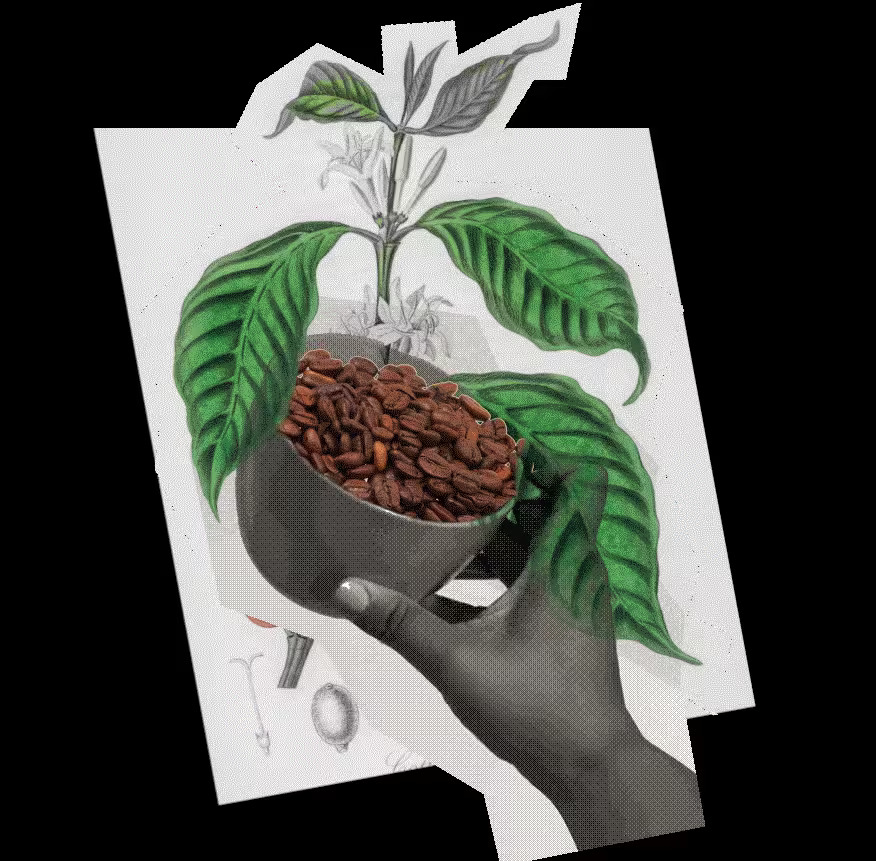Coffee Certifications 101
A research article by Sara Swenson
May 24, 2024
Imagine walking into your local grocery store, entering the coffee aisle, and trying to decide which bag of beans to purchase, keeping sustainability in mind. You might have a few labels vaguely stored in the back of your mind that you look for, but at the end of the day you’re not sure what they really mean. You’re not alone - sourcing sustainable coffee as a consumer is oddly difficult.
This article will walk you through some of the most prominent actors in the certification space, describe what they cover, and point out any controversies or shortcomings of each one. By the end of the article, we hope you will be better equipped to sift through the ‘alphabet soup’ of coffee certifications, allowing you to make better-informed and more sustainable purchases.
Before we begin, it’s important to note the main categories that certifications typically cover, and while it’s common for a certification to only focus on one, in an ideal world all would be covered. Social impact and environmental impact are the two major categories covered by certification bodies, and these can be on the farm-level, supply chain level, or both. There are pros and cons to having a narrow or broad focus, and we’ll go into detail about what that looks like.
Rainforest Alliance
If you’ve ever purchased coffee and paid attention to labels, you’ve probably come across Rainforest Alliance’s frog seal. It’s arguably one of coffee’s best recognized labels, for good reason. Rainforest Alliance is a non-profit whose mission is to “[create] a more sustainable world by using social and market forces to protect nature and improve the lives of farmers and forest communities” (Source). Their work covers far more than just the coffee industry, but included in their initiatives is their Sustainable Agriculture Certification, which covers coffee.
Rainforest Alliance’s Sustainable Agriculture Certification offers arguably the broadest coverage of any other certification in the coffee industry, as it includes farm and supply chain requirements in addition to social and environmental impact requirements. The farm requirements apply to farms that want their coffee to be certified, and the supply chain requirements apply to other stakeholders in the coffee supply chain, such as wholesalers, cooperatives, and roasters. In theory, by tackling the issue from both sides, Rainforest Alliance aims to improve sustainability on the farm level, but also address larger structural issues along the supply chain which make it difficult for farmers to implement sustainable practices (Source, Source).
Rainforest Alliance not only publishes standards and guidance for farms and other stakeholders to voluntarily abide by, but in order to become certified, farms and stakeholders must be audited. However, Rainforest Alliance hires external agencies that they approve of to conduct these audits, and do not perform them themselves. In addition, Rainforest Alliance does not make it clear how frequently these audits are performed post-certification, and what they choose to do if a farm or stakeholder fails an audit. Their model does encourage a “stepwise approach” which encourages growth over pass/fail, but it’s unclear how it encourages or enforces growth post-failure (Source).
Rainforest Alliance has been involved in multiple controversies over the years, including farms it has previously certified being involved in labor rights violations and other issues (Source). Without a clear explanation on how farms are audited and encouraged to continually adopt best practices, it’s difficult to determine the broader impact of their initiatives. Rainforest Alliance could also be more transparent about how it balances environmental and social requirements, and what structures are in place to ensure sustainable practices do not create a cascade of negative social consequences.
Fair Trade Certified
Along with Rainforest Alliance, Fair Trade is arguably one of coffee’s highest profile certifications. “Fair Trade” actually refers to two different organizations: Fair Trade USA and Fair Trade International. The focus of this section will be Fair Trade USA, but it’s important to note that the two organizations split in 2023 due to disagreements regarding the inclusion of large-scale farms in their certification system (Fair Trade USA arguing for inclusion) (Source, Source). This rift raises concerns over whether or not large-scale farms can be considered sustainable at all, and if including large-scale farms is fundamentally against the mission of Fair Trade. With that in mind, let’s look at Fair Trade USA’s standards.
Fair Trade USA is a non-profit whose mission is to “[empower] farmers and workers to fight poverty in ways that improve lives and protect the environment” (Source). Fair Trade USA also covers more than just the coffee industry, but its focus is predominantly on social impact and justice.
Fair Trade’s four main impact areas are: “Income Sustainability,” “Community and Individual Well-Being,” “Empowerment,” and “Environmental Stewardship” (Source). Workers’ rights are the main focus of Fair Trade’s certification criterion, but it’s worth noting that a fourth of these criteria include environmental issues.
Fair Trade’s strength is that it is highly transparent about what criteria farms must comply with, and they’ve broken compliance into three different sections: C-# (Critical), P-# (Progress), and BP (Best Practices). A farm that fails to comply with all C-# criterion loses its Fair Trade certification. After that, if an issue is P-#, a farm is expected to make progress by a certain date (P-3 meaning 3 years post certification). Finally, BP refers to action items that are nice to have, but do not affect the overall certification process. Instances of forced labor are considered C-0 (must never be present), but some issues such as providing free medical care for workers exposed to pesticides are classified as P-5. You can access the full list here.
Fair Trade has seen its fair share of controversy over the years, particularly surrounding its claims of impact. In order to become a Fair Trade certified farm, employees of the farm must establish a cooperative that is democratically governed by its own Fair Trade Committee, and includes what are considered “Premium Participants” – a classification of workers that can be found here. Premium Participant status is dependent on the farm size and type of worker, but it typically excludes temporary workers such as migratory workers. Fair Trade allows certified farms to sell their products with a Fair Trade Premium, and that premium is supposedly distributed within the cooperative to Premium Participants. However, there is no transparency when it comes to what happens after this money is distributed, and as shown above, the premium most likely never reaches the most vulnerable workers. Some farmers argue that the premium is negligible, and not worth the effort of the certification process, even if they already implement many or most of the standards. There are plenty more criticisms of Fair Trade’s model, but considering the controversial rift between both Fair Trade organizations and its lack of transparency when measuring impact, there’s already a lot to unpack (Source).
4C Association
4C Association is the only certification mentioned in this article that is specific to the coffee industry. Based in Germany with global reach, 4C is an independent standard that incorporates environmental, social, and economic impacts into its model. 4C hires 3rd party organizations to audit farms and other stakeholders across the supply chain. 4C’s criteria for certification are markedly less expansive than Fair Trade or Rainforest Alliance’s, but their strengths lie elsewhere (Source).
4C’s Impact Report contains extensive data to back up their impact claims, and is a step in the right direction in terms of increasing transparency within the coffee industry. In addition, 4C includes an Improvement Plan containing data and survey data collected from farmers, which aims to assess 4C’s impacts. While 4C is not as widely known as Fair Trade and Rainforest Alliance, it sets an important standard in terms of transparency and improvement based on data.
Organic
Organic is a difficult term to pin down, particularly because each individual country has different standards. In the US, USDA Organic is the best label to look for. If a product’s place of origin is not the US, USDA will only certify it as organic if the regulations of its country of origin have been approved by USDA (Source). Deconstructing what is considered “Organic” is beyond the scope of this article, but if you’re interested in learning more, here’s a link to the USDA’s Organic Standards.
A more specific certification to look out for is Regenerative Organic Certified, which builds off of USDA Organic’s guidelines, adding certification criteria regarding soil health, land management, animal welfare, and fair labor practices (Source).
Conclusion
We have barely touched the surface of labels you might find on your typical coffee bag, but we hope this article has helped you understand what they mean and their potential shortcomings. As a rule of thumb, certifications are no guarantee and as we’ve discussed, there are many shortcomings that come with certifications. While it’s frustrating to learn that coffee you may have purchased in the past wasn’t as green as you’d hoped, we hope this article has shed light on the challenges that come with guaranteeing any product is perfectly sustainable or ethical.






